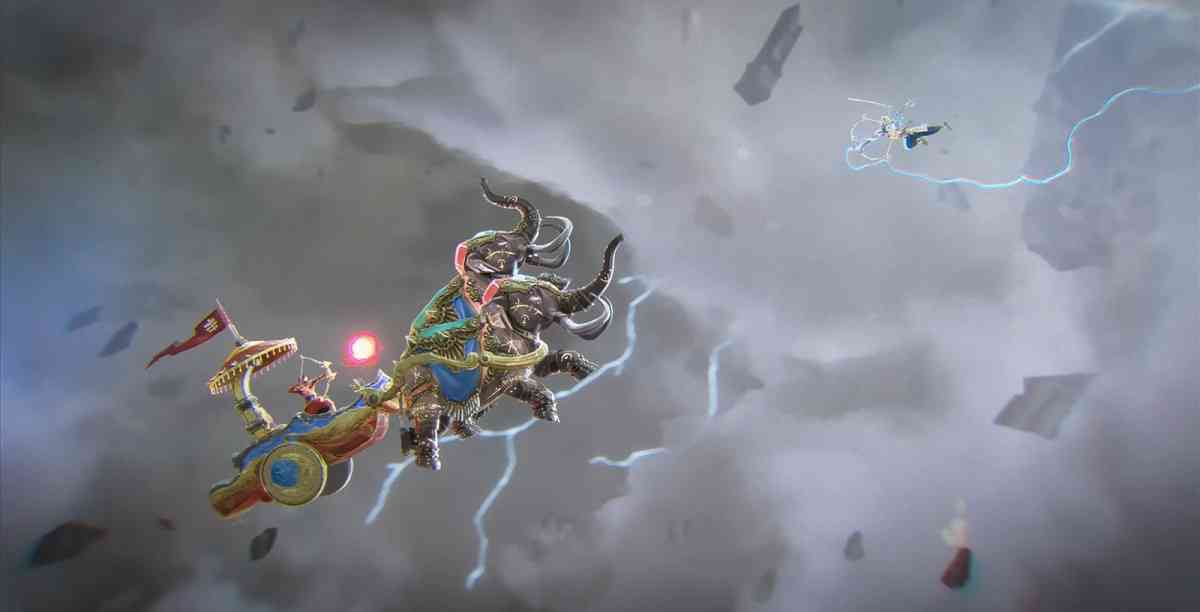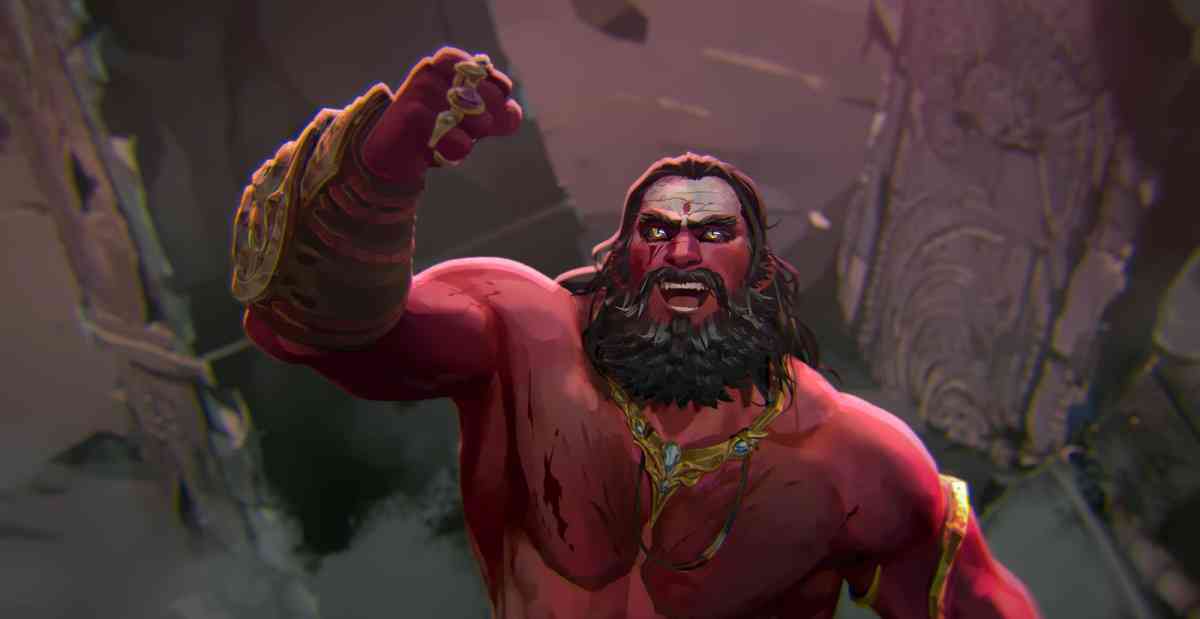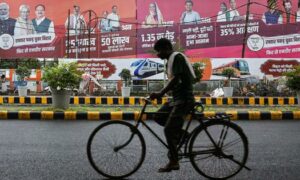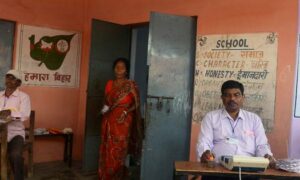
Ishan Shukla’s award-winning animated film Schirkoa: In Lies We Trust (2024) is set in an authoritarian future. Shukla’s second feature will take place in an imagined once-upon-a-time. Shukla has been recruited by the producers behind the Baahubali franchise to direct an animated spin-off, titled Baahubali: The Eternal War.
The first movie in an intended two-parter will be released in cinemas in mid-2027. Baahubali producers Shobu Yarlagadda and Prasad Devineni, who run the company Arka Mediaworks, had previously commissioned the animated series Baahubali: The Lost Legends for Prime Video. The Eternal War has a new design and is on a much bigger scale, like SS Rajamouli’s Baahubali: The Beginning (2015) and Baahubali: The Conclusion (2017).
Baahubali is about a fratricidal war that breaks out in the kingdom of Mahishmati. Starring Prabhas, Rana Daggubati, Ramya Krishnan, Anushka Shetty and Sathyaraj, the action fantasies are blockbusters. Rajamouli recently released Baahubali: The Epic (2025), which combine both titles into a 225-minute cut.
The Eternal War is based on a story by Shukla and Sowmya Sharma and a screenplay by Hollywood writer Scott Mosier. The films focus on Amarendra, the prince who is killed in Baahubali: The Beginning.
“In the afterlife, his heart aching for those he left behind, Amarendra Baahubali finds himself at the centre of an ancient cosmic war between devas and asuras,” according to a press release. “As he navigates through the 14 realms of existence, he forges an unlikely alliance, confronts divine forces beyond mortal comprehension, and fights to restore balance to the cosmos.”
Alongside Schirkoa, Ishan Shukla directed the episode Bandits of Golak in the second season of the animated series Star Wars: Visions (2023). For Schirkoa, Shukla pulled off the near-impossible: he made the film on a low budget with a small team, and roped in international names as Golshifteh Farahani, Gasper Noe, Lav Diaz and Asia Argento for the voice cast. In an interview, 40-year-old Shukla told Scroll about the journey from an indie project to a high-profile, multi-crore franchise. Here are edited excerpts.
Before Baahubali: The Eternal War came SS Rajamouli’s Baahubali films. What do you like about them?
I couldn’t watch the first Baahubali in theatres, but I did watch the second part as well as Baahubali: The Epic.
I love the maximalist filmmaking. Everything is tuned to the highest level, be it MM Keeravani’s epic music, the cinematography, the action, the set design.
Rajamouli sir simply doesn’t hold back. He keeps creating things that come as a sucker punch, that don’t even exist. This actually happens in anime a lot, where things appear out of nowhere when you are least expecting them.
The most important thing, which I am learning from, is that his action is always centered around emotion. His films have dramatic moments or action set pieces that are always supported by a huge emotional build-up.
I don’t see this in other films, where is action for the sake of action. In the Baahubali films, the way the drama, emotions and action is intertwined is incredible and beautiful.

How did you get involved with Baahubali: The Eternal War?
This was around one-and-a-half years ago. Schirkoa was doing the rounds of film festivals. The Star Wars: Visions episode that I had directed had been released on Hotstar. There was buzz around both projects.
Shobu Yarlagadda, the producer of the Baahubali movies, got in touch with me. He had come up with a new animation studio in Hyderabad. He wanted me to do something in the Baahubali universe. As much as I love Baahubali, I didn’t know what I could bring to it.
I went back to the time when I was a child, and I loved Amar Chitra Katha. I wrote a story that was like a love letter to my 12-year-old self. What I came up with was the afterlife of Amarendra Baahubali. Both Shobu and Rajamouli sir loved the idea. Rajamouli sir said the idea was epic and could not crammed into a single film.
How did the story get developed?
I wrote the story. The creative head of Arka Mediaworks, Soumya Sharma, joined me as a co-writer. Then Shobu brought in Scott Mosier, the screenplay writer behind the cult film Clerks, who had also co-directed the animated film The Grinch in 2018.
Scott is a very popular and talented screenwriter, producer and director. He has done a lot of animation work, and he has been developing some very cool projects.
He took over the story, dabbled in Indian mythology and wrote the screenplay from there. He is actually perfect for The Eternal War because he is a great screenwriter and at the same time understands the language of animation very well.

The beauty of Indian mythology is that it isn’t structured and can go in all sorts of directions, whereas comic books in the Western tradition follow certain defined tropes. Will there be a meeting point between these approaches?
Initially, Soumya and I wanted to build our world with everything we had. We tried to pick the best ideas, the best cosmological and physical properties of certain worlds that could help the story. Shobu also brought in Vinay Varanasi, who is a mythology consultant and a very popular name in Hindu sects.
Whenever we had doubts about mythology or gods, we didn’t think of relying on the internet. We needed a master who could tell us what was right and wrong. Vinay Varanasi served as that master.
Soumya, Scott, Vinay and I looked at how the structure and story were flowing in the Indian epic sense. We had two pillars here.
One was Scott, who gave the story a structure, who was making sure that every character has a proper arc, every beat has the appropriate emotional build-up in terms of the action. Vinay was guiding us in terms of whether the ideas were falling in the grade of mythology or not.
When did production on The Eternal War begin? What is the animation style?
We started in mid-2024. Even as Schirkoa was doing its festival run, we had started writing. We started designing in late 2024.
The Eternal War uses 3D animation. Broadly speaking, two kinds of animation are popular in the world. 2D animation is strictly hand-drawn, such as Japanese anime or the classic Disney films. 3D is a little more on the realistic side, like in Pixar films or video games.
We also have stylised 3D animation films and shows, like Spider-man: Into the Spider-Verse and Arcane. In contemporary animation, there is a lot of experimentation with styles that feel a bit more realistic. The action choreography, the way the camera moves or the characters behave, feels more tangible. There is also the hint of the anime factor in terms of the action and the effects.
You can see outlines around the characters. The frames appear painted. I like the painterly feel, and I tried it out in Schirkoa too.
Schirkoa is an indie project compared to The Eternal War, right?
Schirkoa was like a solo project. My French and German co-producers and I were like a team of three to four people trying to make a massive movie. Schirkoa remained an indie, low-budget project until the very end. I’m really proud that I could pull it off. But it did take many years.
What Shobu has done in The Eternal War, the kind of studios he has assembled, is incredible. I feel pretty blessed. He provided whatever team I needed and then went beyond. I was initially nervous, coming from an indie world. But as the designs started coming in and I got more synergy with the teams, things became really exciting.
The production is on between Arka Mediaworks’ animation studio, two UK studios, two French studios and Annapurna Studios in Hyderabad. A few more might be joining soon. I have been shuttling between Hyderabad, Delhi and Paris.
The recent success of Mahavatar Narsimha notwithstanding, Indian animation films struggle at the box office. What are the challenges faced by animation filmmakers?
One factor is definitely economical. Only if certain films make money will more people get interested and join in.
The bigger thing is the way Indians grow up. Our education is very much skewed towards skilled jobs that make money. That kind of environment is never suitable for art. Young people are not brought up in an environment that sustains art. The way kids are growing up isn’t art-friendly, it’s a mishmash of everything.
Countries like Japan and France have a general atmosphere of art that inspires kids. They see art around them all the time and they can pick up something that they feel could be a career. I keep meeting kids who dabble in animation while trying to finish a tech or a business degree. It’s never going to work that way.

In terms of storytelling, animation is still heavily reliant on Indian mythology. How will original stories emerge?
It’s at a nascent stage right now. When you start, you first try to explore what you already have. We’re at the stage that other countries were at a long time back, where they were exploring popular stories, folk tales and their own mythologies.
We are only just getting started. If mythology makes animation mainstream, it might lead people to think, this is great, what lies beyond it? Are there personal stories, modern and fantastical ideas? But that takes time.
Also read:
How an Indian animator assembled an international cast for his futuristic movie
📰 Crime Today News is proudly sponsored by DRYFRUIT & CO – A Brand by eFabby Global LLC
Design & Developed by Yes Mom Hosting






